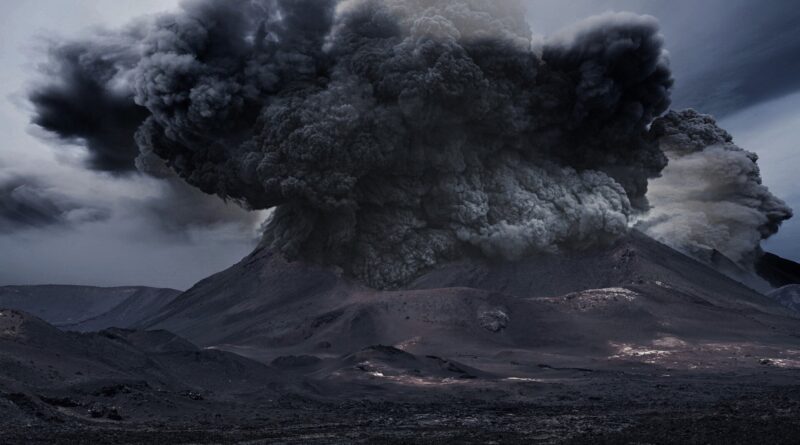Drilling Into Magma For Renewable Energy
Once upon a time, the humble rock of Iceland trailed behind the pack as one of Europe’s most impoverished countries; a deprived economy reliant on the costly exportation of fossil fuels and imported energy sources. It’s difficult to comprehend when compared to the present: it now stands as the 15th richest country in the world per capita, and ousted are the deleterious power plants churning out dystopian bales of smoke — today, 100% of Iceland’s electricity grid is produced via renewable resources.
The impetus for this transformation rose during the 1970s, when the global oil crisis made Iceland’s prior reliance on imported fossil fuels untenable, triggering a demand for alternatives. In response, geologists turned to its abundant natural resources — glacial rivers, waterfalls, and volcanic landscapes provided ample opportunities for energy extraction. By the early 80s, almost all energy production had transitioned to renewable sources. Once thick with smog, the air over its cities is now crystal clear. But Iceland won’t be caught resting on its laurels. In fact, it has grand ambitions. Its next project is somewhere between heroic and villainous: the ominously named Krafla Magma Testbed (KMT) Project will bore into a volcano’s magma chamber, seeking to utilize its scorching fumes to generate energy at a scale never before attempted!
Krafla stands as one of the world’s most active volcanic areas, where temperatures soar up to 2,372°F (1,300°C). While the chamber’s close proximity to the surface is advantageous, the greatest challenge (which one doesn’t need a scientist to explain) is not having their equipment melt into a cartoonish puddle. Iceland has been harnessing the Earth’s heat for a while — geothermal energy requires drilling into underground regions to produce steam from heated water. However, water in the magma chamber of a volcano isn’t steam, but rather “supercritical” — water so hot and pressurized it is somehow neither liquid or steam, but a fourth state of matter; something resembling vapor.
A magma geothermal plant has the potential to produce at least 10 times the power of a traditional geothermal plant. Located at a relatively short depth of only 1 to 2 miles beneath the surface, Krafla’s magma chamber was inadvertently penetrated in 2009 during a geothermal drilling project. To the crew’s cautious delight, they were not immediately faced with a volcanic eruption, proving that drilling into magma can be performed safely.
The first (hopefully non-accidental) borehole is planned to be drilled by around 2026 and should considerably accelerate our understanding of magma and its properties. If this perilous project is successful, the long-term vision includes the potential to observe a volcanic eruption from its source, improve eruption forecasts and even inject fluids into the chamber to manipulate pressure and temperature — essentially allowing humanity to elicit control over nature’s inherent tumult.
The resultant ramifications of such an innovation could extend globally. Not only is there potential for energy exportation, but this technology could enable the harnessing of magma reservoirs elsewhere in the world, and if this infrastructure can be proven efficacious it could significantly curb our dependence on fossil fuels, aiding in the fight against climate change.
As of now, the vast majority of alternative energy types trail fossil fuels in terms of energy generation. They may boast greater environmental sustainability, but their output is often limited. However, if geothermal substitutes can gain prominence, it may render less efficient practices obsolete. Who needs wind turbines when you can simply stick an industrial needle into a volcano and directly guzzle out infinite energy?
Iceland’s veritable abundance of energy cultivates a casual insouciance around its use, from warming up streets, beer brewing, heating greenhouses, and fish farms. It sounds like they’re going bananas… and it turns out, they are. Iceland (until recently) boasted Europe’s largest banana plantation! Having originated in the humid jungles of Southeast Asia, bananas need a hot climate to thoroughly burgeon, and yet in a strange cultural plot twist they’re now flourishing in a country whose name begins with Ice. Due to the growing import costs on various fruits such as strawberries, tomatoes, cucumbers, and bananas, there are a range of greenhouses in Reykir utilizing the cheap energy to produce isolated, disease-free produce.
In 2024, every single home in Iceland is heated with renewable energy. Between the years of 1990 and 2014, Iceland’s geothermal electricity production grew by 1700%! Its green energy production per person is approximately 55,000 kWh per person, which becomes significant when contrasted to the EU average of 6,000 kWh — that’s almost 10x more!
Many energy-intensive industrial sectors have risen thanks to these advancements. The country is a significant producer of aluminum, which constitutes a pivotal role in its economy, as well as silicon, pharmaceuticals, biotechnology, and the more traditional staples of fresh fish and meat. Despite the boundless benefits of eco-friendly infrastructure, the transition didn’t occur overnight; nor was it cheap. Advocates for renewable energy had to educate and persuade voters to abandon coal, funding had to be generated by convincing investors, securing government grants, and engaging private companies, as well as the introduction of sophisticated engineering to ensure the shift was successful. However, this undaunted commitment has paid dividends. Now all that’s left is convincing the rest of the world.
“Twenty-five percent of Europeans live in areas that could benefit from geothermal power,” states Jack Kiruja, a geothermal analyst with the International Renewable Energy Agency, “but none have been as successful in fully exploiting their geothermal resources.”
Kiruja states that Iceland has “clear geothermal regulations, policies that reduce the economic risk of drilling and robust training programs to build technical expertise,” and that it is “laser-focused on finding ways to leverage its geothermal resources,” the implication being that many European countries have been unable or unwilling to prioritize this shift with sufficient speed.
Iceland’s pioneering sustainability paints an optimistic picture. While it can be granted the advantage of pre-existing natural phenomena, its environmental model is a functional and vitalizing triumph — one in which every country should take inspiration.
This article is guest written by Dannien Sullivan, a writer and marketer for Odyssey World, passionate about sharing thought-provoking and insightful articles on the subjects of sustainability, clean energy, and futurology.
Have a tip for CleanTechnica? Want to advertise? Want to suggest a guest for our CleanTech Talk podcast? Contact us here.
Latest CleanTechnica.TV Videos

CleanTechnica uses affiliate links. See our policy here.

